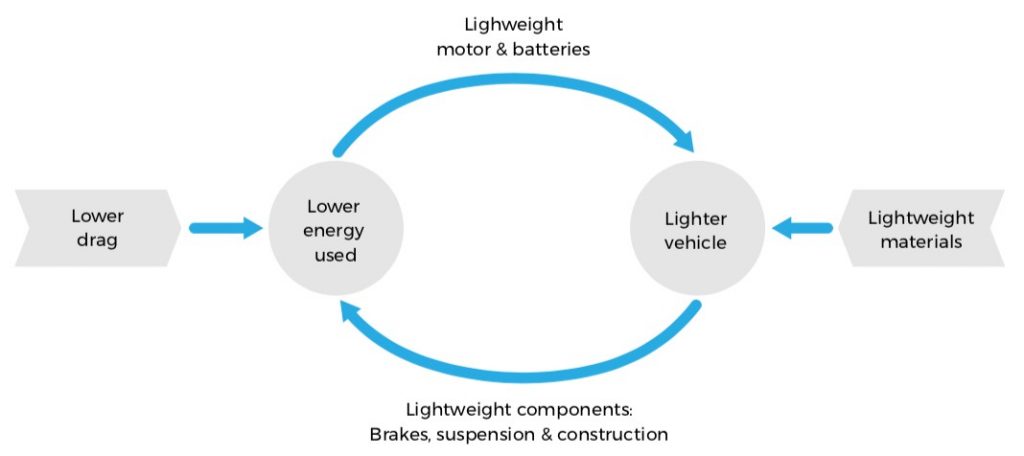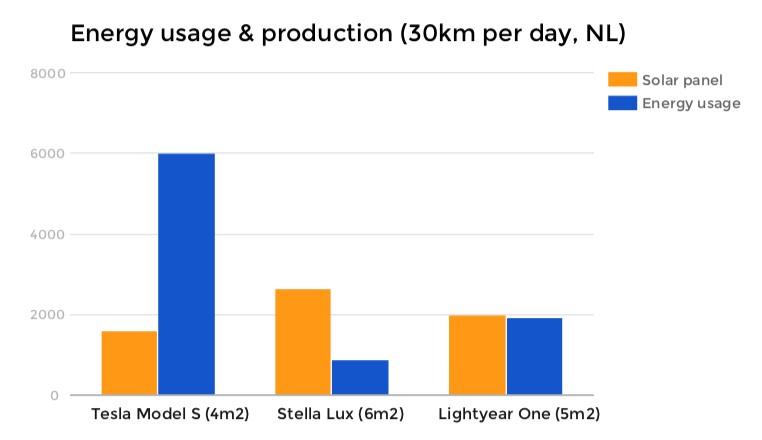
Infinite Drivetime: Talking Solar Cars With Lightyear
Solar-powered cars have been mostly experimental vehicles trying to break records at competitions like the World Solar Challenge in Australia. On the commercial side, the efforts have tended toward Solar Assisted Electric Vehicles (SAEVs). These vehicles have proven impractical and expensive, providing nothing more than small incremental gains to mileage. Ford and Toyota have had shots at products and to date, no system has managed to gain traction. With the coming of low cost-efficient solar cells alongside the transformation of the automotive industry, a few new players have come forward to take another pass at SAEVs.
One of these is the Dutch company Lightyear, founded in 2016 to create an electric four-wheel drive solar-powered car that can handle rough terrain with a battery range up to 800 kilometers. The first car is being designed for efficiency with attributes of solar cars and electric cars. I checked in with CEO and Co-founder Lex Hoefsloot to learn more about the company’s fresh perspective during this transformative time for the automotive industry.

CTG: Lex, the promise of a solar powered car is considered by many as the holy grail of EVs. Can you summarize for me how to company came to be?
LH: The company originated from a student team of 20 who developed a 4-seater solar car back in 2012 at the World Solar Challenge. After taking the winning trophy for the Cruiser class, we continued to develop the car and went on to win three other competitions up until 2017 At this stage, we decided that our concept had potential in the commercial market.
We looked at the current trends in the automotive industry and the energy sector and saw that EVs, sharing services and autonomous vehicles are turning current infrastructure and revenue models upside down. We saw that with the rise of renewables, a rethinking of the grid and setup of charging infrastructure was needed, especially in developing areas where car usage is increasing exponentially. To this end, we decided that an infrastructure-independent car which makes use of the most readily available energy source – the sun – would be the right solution. With this in mind, we founded Lightyear in 2016 to bring clean and affordable mobility to everyone.
CTG: Can you can tell me more about the first car and what you have been up to this year?
LH: 2018 has been a major year for us. We have gone from a team of 20 to 60 since January and are currently in detailed design phase, with plans to release a prototype by early/mid 2019. In January we received the CES Climate Change Innovator Award, which is given to startups that dramatically reduce greenhouse gas emissions. In April, we partnered with automotive engineering company EDAG, who will provide resources and expertise during our engineering phase. In April we also closed our first Series A investment round at $6 million. We have almost finished building our new production facility which will be used to work on the first full prototype for our first car, the Lightyear One.
Early on during the concept for the car, we realized we needed to find a niche in the saturated car market. Solar cars excel in driving in off grid areas where no charging infrastructure exists. Therefore, we designed the Lightyear One to be a car for all driving conditions. It has 5 seats, 4×4 wheel control with an air suspension system and can utilize any energy source available. Therefore, if you drive mostly at night, you can still drive.
CTG: SAEVs have been tried before by some of the major players in the industry. What makes your approach different?
LH: For many of the previous attempts, solar has been added as an afterthought after the car has been designed. In fact, the benefit of using solar on cars is only truly realized through a full holistic design which accounts for solar from the start, with a core focus on efficiency. Many other companies tend to skip this initial step for building out the car architecture. What we have done at Lightyear is take a ground up approach for car design with a new architecture design platform. By focusing purely on maximizing improvements in mileage, we improve driving efficiency of an equivalent car using a standard design platform by a factor of 3.
CTG: What specifically have you done to make your car more efficient?
LH: We have based the new platform at its core on the principles that determine an EV’s energy use: aerodynamic drag, rolling resistance, drivetrain efficiency and the auxiliary power usage, which we have optimized solely for efficiency. By combining these factors along with solar efficiency, lightweight materials, and battery efficiency you create a car which is completely different to anything else.

The efficient weight cycle for a vehicle
For example, for the drivetrain we have chosen to use in-wheel motors to optimize the Lightyear One for efficiency while also providing precise control for driving off-road. Through the elimination of the transmission, we minimize needless energy loss, making the car lighter while also adding space for a larger battery.
CTG: Many people question if the practical constraints of using a solar car on a day-to-day basis would prevent wider market adoption. What if for example, I park my car in a garage, under trees or somewhere without adequate sunlight to power the car?
LH: All our mileage estimations take into consideration a variable which considers the average time that a typical car spends out of direct sunlight over a year. For locations with access to indirect sunlight, say in the shadow of an office building, our panels would still harness energy. That being said, the car would work without any use of the solar panels at all via access to conventional charging stations.
CTG: To date, solar technology hasn’t been able to provide the power conversion efficiency that you are promising. Can you tell me a bit about the technology you are using?
The high solar energy yield comes from two key factors: maximal surface utilization and panel efficiency. For a solar car, a relatively standard solar panel would already provide enough energy for average trips around the Netherlands. However, a typical issue that previous SAEVs face is that as the panels are applied to a rounded car body, some of the cells are out of direct sunlight, preventing any of the panels from generating power. Our current solar panel electronics technology decouples each cell, allowing them to work independently. This combined with efficient panels means we have improved solar yield by around 20%. Ultimately, we see the panels that are released with the mass production model being even more efficient due to advancements of new solar technologies, such as perovskite. In June, this achieved a 27.3% conversion efficiency, exceeding the world record for a single-junction silicon solar cell.
CTG: What’s the feasibility for a truly infrastructure-independent car?
LH: We see drivers being able to get as many kilometers of charge from the sun per year as kilometers driven. We are very close to a point today where the car is almost energy independent, and with minor advancements in solar efficiency we see the consumer model being entirely infrastructure-independent. This means you should be able to drive the car without ever needing plug it in to charge given that the car receives an average level of annual sunlight exposure. A Tesla Model S would need triple the amount of energy to go the same distance as the Lightyear One. This has only been achievable however through our rigorous redesign of the EV and our focus on creating an efficient car through a complete holistic design consideration.

Energy usage and production in Wh
CTG: You are initially aiming at a high cost-low production target. What’s the ultimate aim for bringing the car to the average consumer?
LH: The car will initially be priced at $140,000 before tax and will be on limited release. At this early stage, it’s hard to pin down a figure on how much the mass market model will be. However, we envisage the cost decreasing proportionally to our production volume, as well as with the decrease in cost of the new technologies we are using.
CTG: Looking forward, what are your plans for funding and partnering?
LH: We are indeed looking to raise capital through a mixture of venture capital or family office investment. We are particularly interested in building ties with players in the automotive industry. We are very open to partnering in general and feel the sharing of resources and expertise is an essential part of rapid development.
CTG: What the major challenges for Lightyear looking forward?
LH: Apart from the challenges of building a car company from scratch, one major factor that we need to improve is public perception. Understandably, there is a lot of disbelief in SAEVs in general, let alone the bold claims we are making in regard to range and performance. We are excited to show people what the car is capable of in 2019 once we are certain of our promises.
CTG: Finally, you mentioned we will see a prototype next year, but when we will see the first commercial cars in production?
LH: The plan is to release the first 10 reserved cars in 2020, but expect to see the first official production model next summer.














